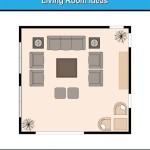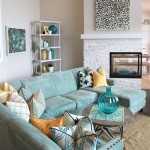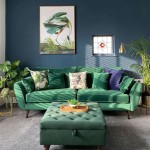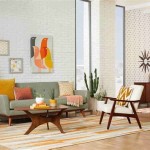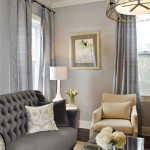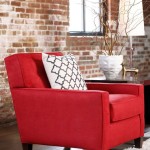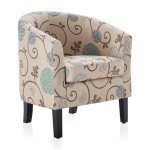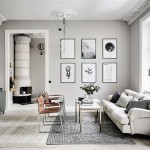Faux Trees For Living Room: A Comprehensive Guide
The integration of greenery into interior spaces has become increasingly prevalent, reflecting a desire to connect with nature and enhance the aesthetic appeal of living environments. Faux trees, also known as artificial trees, present a practical alternative to live plants, offering a low-maintenance solution for adding natural elements to a living room without the demands of watering, fertilizing, and pest control. This article provides a detailed exploration of faux trees for living rooms, covering aspects such as their benefits, selection criteria, styling tips, maintenance, and potential drawbacks.
Benefits of Incorporating Faux Trees
Faux trees offer several advantages over their living counterparts, making them an appealing choice for individuals seeking to enhance their living room ambiance without the responsibilities associated with plant care. One primary benefit lies in their low maintenance requirements. Unlike live plants, faux trees do not necessitate regular watering, pruning, or repotting. This feature is particularly attractive for individuals with busy lifestyles or those lacking experience in plant care.
Another significant benefit is the durability and longevity of faux trees. They are not susceptible to diseases, pests, or environmental factors that can compromise the health and appearance of live plants. A high-quality faux tree can maintain its aesthetic appeal for an extended period, providing a consistent visual element in the living room.
Furthermore, faux trees offer greater versatility in terms of placement. Live plants often require specific light conditions and humidity levels to thrive. Faux trees, on the other hand, can be placed in any area of the living room, regardless of the availability of natural light. This flexibility allows for greater creative freedom in interior design.
Finally, for individuals with allergies, faux trees present a hypoallergenic alternative to live plants. They do not produce pollen or spores, eliminating the risk of triggering allergic reactions. This makes them a suitable option for creating a comfortable and healthy living environment.
Selection Criteria for Choosing Faux Trees
Selecting the appropriate faux tree for a living room requires careful consideration of several factors. The quality of materials used in the construction of the tree is paramount. High-quality faux trees are typically made from durable materials such as silk, polyester, or high-grade plastics. These materials contribute to a more realistic appearance and ensure the longevity of the tree.
The level of realism is another important consideration. Faux trees with intricately detailed leaves, realistic bark textures, and natural-looking branching patterns tend to be more visually appealing and blend seamlessly into the living room décor. It is advisable to examine the tree closely, paying attention to details such as color variations, leaf veining, and the overall shape of the tree.
The size and scale of the faux tree should be proportionate to the dimensions of the living room. A large tree may overwhelm a small space, while a small tree may appear insignificant in a large room. It is essential to measure the intended placement area and choose a tree that complements the existing furniture and décor.
The style of the faux tree should align with the overall aesthetic of the living room. Options range from classic species like fiddle leaf figs and olive trees to more exotic varieties like palms and bamboo. Selecting a tree that complements the existing color palette, furniture styles, and architectural features will contribute to a cohesive and harmonious interior design.
The base or planter of the faux tree is another important consideration. A well-chosen planter can enhance the overall appearance of the tree and complement the surrounding décor. Options range from simple ceramic pots to more elaborate woven baskets or decorative containers. The size and style of the planter should be proportionate to the tree and the overall design of the living room.
Styling Tips for Incorporating Faux Trees
Effective styling is crucial for seamlessly integrating faux trees into a living room. One key aspect is to create a visually appealing arrangement. Placing the faux tree in a prominent location, such as near a window or in a corner, can draw attention to its presence and enhance its impact. Consider using a decorative screen or room divider to create a backdrop for the tree, adding depth and visual interest.
Layering different textures can enhance the overall aesthetic of the arrangement. Surrounding the base of the faux tree with natural elements such as moss, stones, or bark can create a more realistic and organic feel. Adding decorative accents such as candles, books, or small sculptures can further enhance the visual appeal of the arrangement.
Consider the lighting in the living room. While faux trees do not require natural light, strategically placed artificial lighting can enhance their appearance. Spotlights or uplights can highlight the tree's texture and form, creating a dramatic effect. Soft, ambient lighting can create a warm and inviting atmosphere.
Grouping faux trees with other decorative elements can create a cohesive and visually appealing vignette. Pairing the tree with other plants, such as ferns or succulents, can add depth and texture to the arrangement. Consider using a variety of heights and sizes to create a more dynamic and interesting display.
Regularly adjusting the branches and leaves of the faux tree can help maintain its realistic appearance. Dusting the leaves and cleaning the planter can also contribute to the overall cleanliness and aesthetic appeal of the arrangement. By paying attention to these details, one can ensure that the faux tree remains a visually pleasing and integral part of the living room décor.
Maintenance of Faux Trees
Although faux trees are low-maintenance compared to live plants, they still require some attention to maintain their appearance and longevity. Regular dusting is essential to prevent the accumulation of dirt and grime on the leaves and branches. A soft cloth or feather duster can be used to gently remove dust particles. For more stubborn stains, a mild soap and water solution can be used.
Cleaning the leaves of the faux tree is another important aspect of maintenance. Over time, dust and dirt can accumulate on the leaves, diminishing their luster and realism. A damp cloth can be used to wipe down each leaf individually. For larger trees, a spray bottle filled with water can be used to mist the leaves, followed by a gentle wipe with a clean cloth.
Protecting the faux tree from direct sunlight is crucial to prevent fading and discoloration. While faux trees are not susceptible to sunburn like live plants, prolonged exposure to direct sunlight can cause the colors of the leaves and branches to fade over time. Placing the tree away from direct sunlight or using UV-resistant sprays can help prolong its lifespan.
Periodically inspecting the faux tree for any signs of damage or wear is also important. Check for loose leaves, broken branches, or damaged planters. Repairing any damage promptly can prevent further deterioration and maintain the tree's aesthetic appeal. Replacing damaged leaves or branches can be easily done with readily available replacement parts.
Storing the faux tree properly when not in use can also extend its lifespan. When storing the tree, it is important to clean it thoroughly and protect it from dust and moisture. Wrapping the tree in a protective cover or storing it in a dry, climate-controlled environment can help prevent damage and ensure that it remains in good condition for future use.
Potential Drawbacks of Faux Trees
While faux trees offer numerous benefits, it is important to acknowledge their potential drawbacks. One common concern is the cost of high-quality faux trees. Realistic-looking and durable faux trees can be significantly more expensive than live plants. This upfront cost may be a deterrent for some individuals.
Another potential drawback is the lack of natural air purification. Live plants contribute to air purification by absorbing carbon dioxide and releasing oxygen. Faux trees, on the other hand, do not offer this benefit. Individuals seeking to improve air quality in their living room may need to consider alternative solutions such as air purifiers.
The environmental impact of faux trees is another consideration. The production of artificial trees often involves the use of synthetic materials, which can contribute to pollution. It is important to choose faux trees made from recycled materials or to dispose of them responsibly at the end of their lifespan.
The perceived lack of authenticity is another potential drawback. Some individuals find that faux trees lack the natural beauty and vitality of live plants. While high-quality faux trees can closely mimic the appearance of real trees, they may not fully replicate the sensory experience of being surrounded by living greenery.
Finally, the potential for dust accumulation can be a concern. Faux trees can attract dust and allergens, particularly in environments with poor ventilation. Regular cleaning is essential to prevent the accumulation of dust and maintain a healthy indoor environment.

Diy Faux Real Indoor Tree Jenna Sue Design

The Best Faux Trees Me And Mr Jones

Costway 6 Ft Artificial Ficus Silk Tree Home Living Room Office Decor Wood Trunks Qd 65359 The

How To Make A Stunning Diy Faux Tree That Looks Real

Artificial Trees For Home Décor Indoor Fake Plants Faux Living Room Ficus Tree 6 Feet Etsy

Artificial Trees Fake Delivery Evergreen

7 Ft Realistic Artificial Ficus Tree In Pot Natural Trunk Lush Leaves Lifelike Faux

Indoor Plants Trees Buy Beautiful Botanicals Pottery Barn

Artificial Palm Tree Fake With Lifelike 15 Leaves Faux Plant 5 2ft For Living Room
Fake Trees Shop For Living Room

